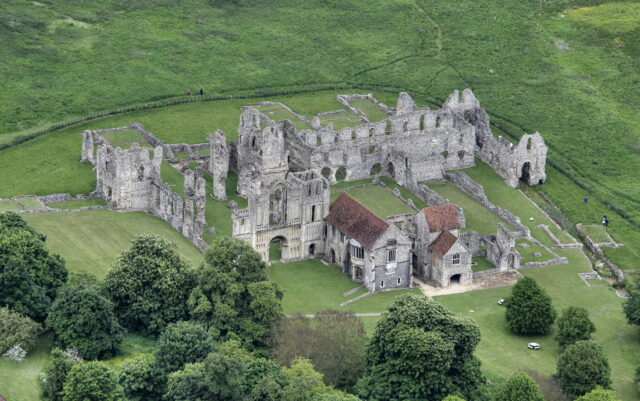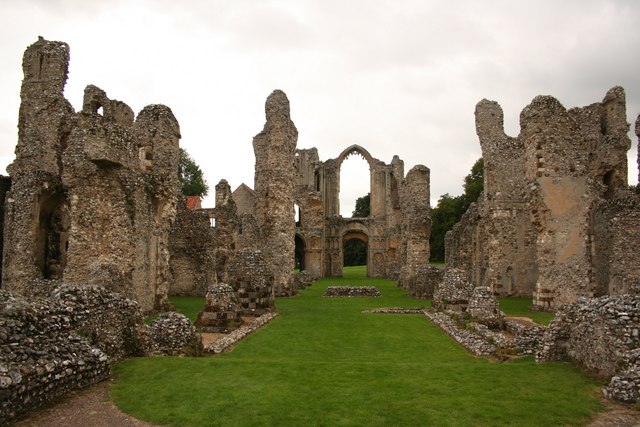Located in the heart of Norfolk’s lush countryside, Castle Acre Priory is a medieval heritage site that was once a bustling hub of religious activity. Founded almost 1,000 years ago, the priory operated for centuries before it was ultimately abandoned and fell into disrepair. Now, all that remains of the priory are the stone walls of what was once an ornate and beautiful building.
The origins of Castle Acre Priory

The story of Castle Acre Priory begins in the 11th century, a period marked by Norman conquest and architectural innovation. Founded by William de Warenne, a close associate of William the Conqueror, in 1089, the Priory was a symbol of religious devotion and political power. As a Cluniac monastery, it followed the reforms of Cluny, emphasizing liturgy, scholarship, and austerity. Over the centuries, Castle Acre Priory grew in wealth and influence, attracting monks and pilgrims from across the land. Its architecture, a blend of Norman solidity and Gothic elegance, reflects the changing tastes and spiritual aspirations of medieval England.
The dissolution of the monasteries under Henry VIII marked the beginning of the end for Castle Acre Priory. Stripped of its religious function, the Priory fell into disrepair, its stones repurposed, and its lands redistributed. Yet, despite centuries of neglect, the site retains a haunting beauty.
The architecture of Castle Acre Priory

Wandering through the ruins of Castle Acre Priory, the grandeur of its design is obvious. The west front, with its ornate Norman doorway, serves as an example of the skill of medieval masons. Beyond the entrance, the cloister, once the heart of monastic life, stretches outward, and the chapter house, where monks would gather to read and discuss the Rule of Saint Benedict, features intricate carvings that hint at the artistic talents of its inhabitants.
Perhaps the most striking feature of Castle Acre Priory is the Prior’s lodging, a rare example of monastic luxury. With its finely carved fireplaces and expansive windows, it offers a glimpse into the private lives of the monastery’s leaders. The priory church, though now largely reduced to its foundations, was once adorned with colorful frescoes and stained glass.
The daily life of monks

Life at Castle Acre Priory was governed by the Rule of Saint Benedict, which prescribed a balanced routine of prayer, work, and study. The monks began their day with Matins, the first of several services, before dawn and ended with Compline, the final prayer at night. In between, they completed tasks of manual labor, such as tending the priory’s lands, copying manuscripts, or caring for the sick.
The refectory, where the monks took their meals in silence, listening to readings from scripture, remains one of the more important spaces at Castle Acre Priory. Meals were simple, reflecting the Cluniac emphasis on austerity, but the sense of community was palpable. The infirmary, library, and guesthouse speak to the priory’s role as a center of healing, learning, and hospitality. Despite the rigors of monastic discipline, there was room for creativity, scholarship, and the care of others.
Preserving the Priory’s history

Today, Castle Acre Priory is cared for by English Heritage, which has undertaken extensive efforts to preserve the site for future generations. Visitors can explore the ruins, marvel at the medieval stonework, and learn about the priory’s history through informative displays and guided tours. The site also hosts a range of events, from historical reenactments to family-friendly activities, bringing the past to life in engaging and accessible ways.
Read more: Take a Trip Back In Time With These Photos of Imperial Russia’s Winter Palace
While the Priory may have been abandoned centuries ago, what’s left of the site offers a glimpse into England’s medieval past, including the rich heritage of Cluniac monks in the region.
